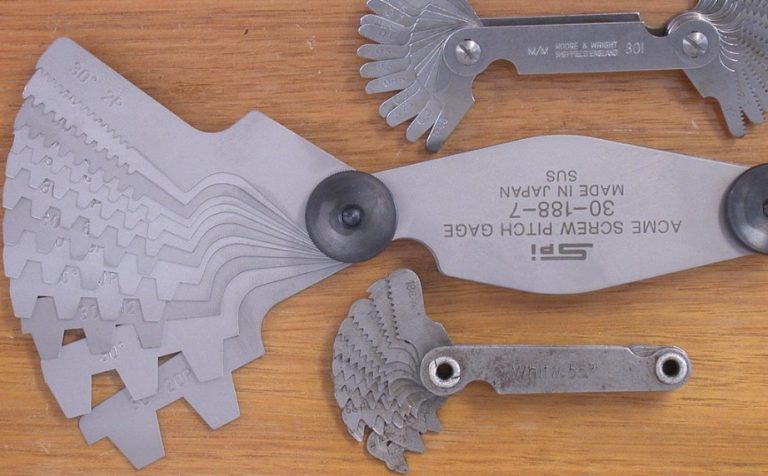A thread gage can be a very useful tool for people in a wide variety of professions. It can help hobbyists with numerous projects as well.
Your work or hobbies may involve working with various types of threaded equipment and items. These may include screws, bolts, and pipes. The thread pitches and measurements of these items may vary from one piece of equipment to the next. Determining what the thread pitch is can be difficult if you’re simply trying to “eyeball” it.
Luckily, that doesn’t need to be a problem. A thread gage can help you quickly measure the thread pitch of an item or piece of equipment you’re using, helping you work much more efficiently than you otherwise might.
That said, a thread gage is a more valuable and useful tool when you choose the right kind. After all, thread gages come in several forms.
This general overview will familiarize you with some of the more common. By knowing more about the different types of thread gages, you’ll be more confident when deciding which one to use.
Thread gage shapes
The shape of your thread gage needs to essentially conform to the shape of the item you’re measuring. Common thread gage shapes include pipe, cylindrical, and tapered.
Choosing the right shape of thread gage is usually fairly easy. All you have to do is compare the shape of the item you’re measuring to the shape of your various thread gages and choose the closest match.
Thread gage measurement units
Measurement units for thread gages are fairly standard. There are English system (the system used in the United States) thread gages and metric system thread gages. There are also some thread gages that work with both measurement systems. These are sometimes considered to be “general use” thread gages.
To some degree, the best type to use will depend merely on which system you’re most comfortable with. However, because you may be working with items that were designed by people who use a different system, you may want to have both English and metric system thread gages on hand. Or, if you’re on a budget, you can stock up on thread gages that work with both systems. Their versatility can be very helpful depending on the types of equipment you use.
Thread gages based on thread designations
Most thread gages are also designed with different thread designations in mind. General thread designations include the following: UNS, UNF, UNC, NPT, ACME, and Buttress.
Additionally, thread gages may be designed for different gage frequencies. For example, some thread gages are designed for use in high volume production environments. These may be the type you wish to use if you rely on thread gages often throughout a work day. On the other hand, there are also thread gages designed for lower volume production jobs that may be better-suited to hobbyists.
The main point to remember is that, while thread gages are helpful, there is no universal thread gage that’s right for all purposes. You need to understand the different types of thread gages to better determine how to choose one. Hopefully, the information here has been of assistance in this regard.


0 Comments